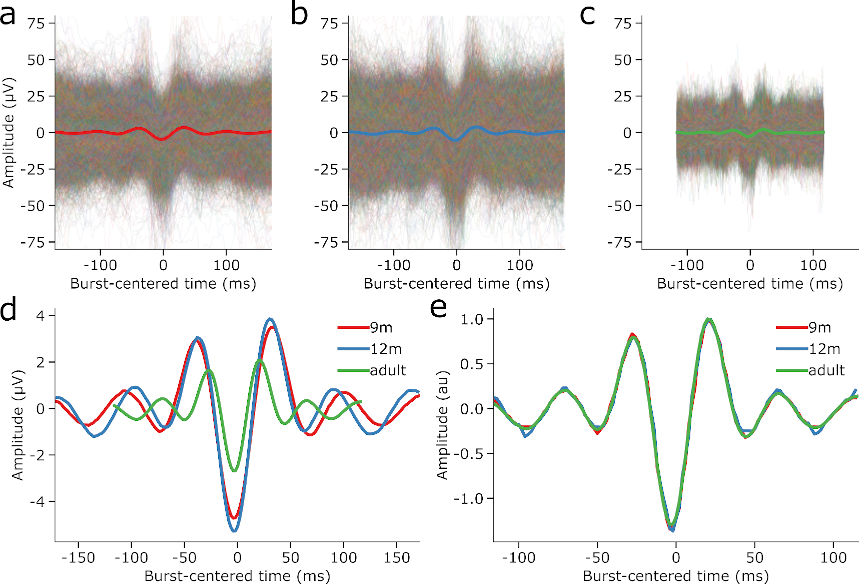Bursting with potential: How sensorimotor beta bursts develop from infancy to adulthood

Abstract
Beta activity is thought to play a critical role in sensorimotor processes. However, little is known about how activity in this frequency band develops. Here, we investigated the developmental trajectory of sensorimotor beta activity from infancy to adulthood. We recorded electroencephalography (EEG) from adults, 12-month-olds, and 9-month-olds while they observed and executed grasping movements. We analysed ‘beta burst’ activity using a novel method that combines time-frequency decomposition and principal component analysis (PCA). We then examined the changes in burst rate and waveform motifs along the selected principal components. Our results reveal systematic changes in beta activity during action execution across development. We found a decrease in beta burst rate during movement execution in all age groups, with the greatest decrease observed in adults. Additionally, we identified four principal components that defined waveform motifs that systematically changed throughout the trial. We found that bursts with waveform shapes closer to the median waveform were not rate-modulated, whereas those with waveform shapes further from the median were differentially rate-modulated. Interestingly, the decrease in the rate of certain burst motifs occurred earlier during movement and was more lateralized in adults than in infants, suggesting that the rate modulation of specific types of beta bursts becomes increasingly refined with age.